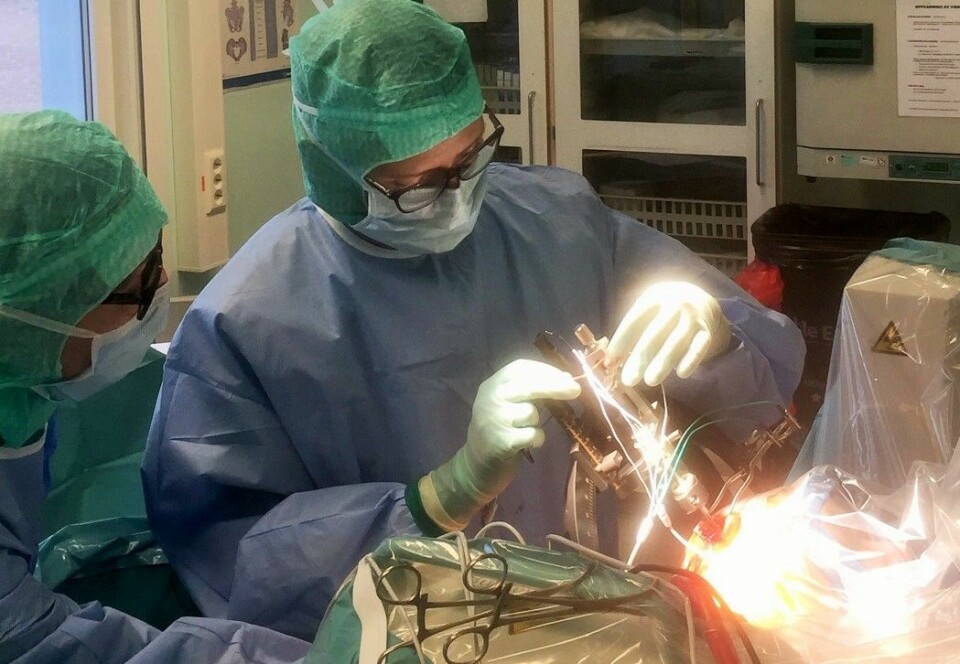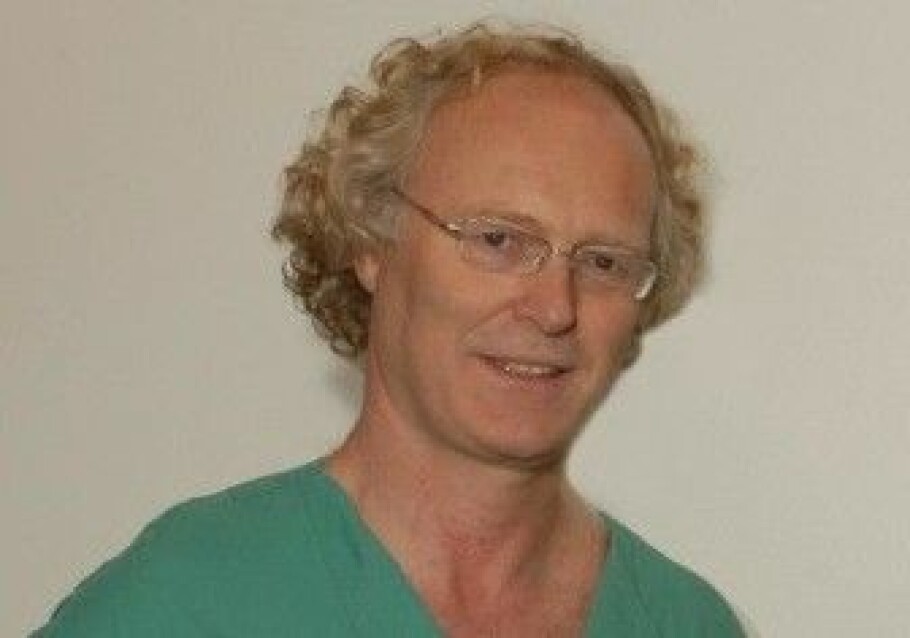
Can deep brain stimulation help with epilepsy?
Some patients receive little benefit from epilepsy medication. Many have high hopes for treatment that sends electrical impulses through the brain. Results from a new Norwegian study are however not as encouraging as expected.
Approximately 0.7 per cent of the Norwegian population has active epilepsy, corresponding to approximately 31 000 adults and 5 000 children. Epilepsy brings with it major social, human and medical difficulties.
For some epileptic patients, medication does not adequately control the epileptic seizures. Others with the condition suffer serious side effects from medication. Epilepsy that is difficult to treat with medication dramatically reduces the person’s quality of life.
These patients are at risk of injury during the seizures. They also have an increased risk of impaired cognitive function and of dying prematurely.
Patients hoping for new forms of treatment
Only a small percentage of these patients can be helped by brain surgery, where the area of the brain that causes epilepsy is removed. This patient group is therefore urgently hoping for new treatment options.
Recently, senior physician Helle Herrman at Oslo University Hospital (OUS) led a study that investigated one such new treatment option.
Deep brain stimulation
Epilepsy is a collective term for diseases of the brain that cause episodes of involuntary movement, or seizures, of varying frequency, according to the World Health Organization. Seizures are caused by abnormal and uncontrolled electrical activity in the brain.
Deep brain stimulation (DBS) treatment is one of the most promising treatments of recent decades. It involves sending low voltage electrical impulses through certain areas of the brain to moderate abnormal activity there.
The method is considered an effective and safe treatment for many disorders, such as Parkinson's disease and tremors. In recent years, deep brain stimulation has also been used to treat epilepsy.
Two electrodes – one on each side of the patient’s head – are implanted in an area of the brain that helps to disperse the epileptic seizures. A pacemaker located under the skin in the chest powers the electrodes. The signals from the electrodes regulate the electrical activity in a small collection of brain cells called ANT, an abbreviation for anterior thalamic nucleus.
The theory holds that deep brain stimulation should reduce epileptic seizures and make them less severe.
But little research has been done on how effective the treatment actually is.
North American study showed good results
The only solid study so far was done in North America. This study showed that participants’ seizures were reduced by 29 per cent after three months, as compared to the control group.
The participants in this so called SANTE study who received the electrical impulses were randomly selected. Neither the patients nor the doctors knew who received the treatment and who didn’t.
The researchers monitored how the patients progressed after the controlled scientific study was completed. After five years, the number of seizures had declined by 69 per cent compared to before the study started.
New study in Norway
The researchers at Oslo University Hospital have now repeated the study, with a longer observation time than the three months in the original SANTE study.
The goal was to see if they could achieve the same reduction in seizures over a longer period and to detect possible side effects.
All the participants had been assessed for possible epilepsy surgery, but were not good candidates for this for various reasons. They journaled for three months before the implant operation, noting when they had seizures and how serious they were.
All 18 participants had ANT electrodes implanted in the brain, but only eight of them were randomly selected to receive active stimulation from day one. The rest served as a control group.
Herrman collaborated on the study with OUH’s Departments of Neurology and Neurosurgery and the National Center for Epilepsy.
The implant surgeries occurred between April 2010 and March 2015.
Everyone eventually received stimulation
Researchers followed the patients for 12 months. The first six months were double blinded – that is, neither the doctors nor the patients knew if they were receiving active treatment. Medical personnel unrelated to the study treated the selected patients.
“All the participants were informed that everyone would receive active stimulation after a certain period,” said Espen Dietrichs, one of the authors of the study and a neurologist and professor at OUS.
After six months, the control group also received active stimulation with a low current of 5 volts.
The researchers conducted follow-up sessions with the patients at three, six, nine and twelve months following the operation.
More seizures for some
The intention was to have 40 patients participate in the study. But after the first six months with 18 participants, the researchers chose not to add any more.
Although none of the participants experienced serious side effects from the treatment, the study was thus less extensive than planned.
There was no significant difference between the group receiving stimulation and the control group after the first six months.
“Our results with this study weren’t as good as we’d expected. We didn’t see any significant improvement from treatment, and in some patients we saw a possible worsening of their condition,” Dietrichs says.
Some patients without stimulation also improved, which could be a placebo effect. But other causes are possible, such as natural variation in disease activity, he says.
The preliminary analysis after six months showed that some patients who received the DBS therapy had more epileptic seizures than before the study started.

Slight decrease in seizures
"We chose to end the study before we had done a statistical analysis of the results", says Dietrichs.
If testing a drug with limited side effects, a study might continue until the end even if results aren't as expected. If a study involves surgery however, that might have dangerous side effects, researchers will proceed with more caution.
"In the end, when we did an analysis, the results weren't as bad as we had feared. They are not so much worse than the North-American SANTE-study", says Dietrichs.
By the end of the study, the number of seizures per month was 77 per cent of the seizure frequency before the start of the study.
Both groups experienced a 20 percent decline in seizures after six months of stimulation. There was no significant difference between the two groups after one year.
Seizures for four of the patients were reduced by half, and five patients had half as many local seizures after six months of treatment.
The results showed no increased effect over time among the participants who received stimulation for all 12 months.
Disappointing results
"We are disappointed that the results weren't better than this", says the professor.
A 20 per cent reduction in seizures might not sound so bad, if you are an epileptic suffering from terrible seizures who has tried everything, but nothing works.
"But in research we aim at making the patient either completely free of seizures, or at least reducing seizure frequency by 50 per cent. That would be considered a robust result", says Dietrichs.
At the same time, the reduction in seizures was larger than the researchers feared when they ended the study. So the results suggest that the method does have an effect.
"Our study supports the findings of previous studies that deep brain stimulation is a safe treatment, with efficacy in patients having severe epilepsy and who aren’t helped by medications," says Dietrichs.
"What is clear is that we need more studies on this", he adds.
More severe epilepsy?
Dietrichs and Herrman and the research team are now trying to find the reasons for why the results of the treatment were not better.
One possible reason why the findings did not quite measure up to those in the SANTE study may be that the Norwegian patients had the most severe type of epilepsy.
The patients were between 18 and 70 years old and experienced on average 53 seizures a month. Ten of the 18 participants received disability benefits, two were employed, ten had stable living situations, and eight lived alone.
Refine, double-blind - and try again
Another explanation for the poor results compared to other studies may be that many of the earlier studies were not blinded.
“The strength of a double-blind study is that neither the patient nor the therapist knows who is being treated and who makes up the control group,” says Dietrichs.
When therapists know which patients are receiving active treatment, it can influence the placebo effect.
"We need proper scientific examinations of this method", says Dietrichs. "This treatment is being given here and there around the world. A few people are operated and given treatment, both patient and doctor know the treatment is being given, and then a study is written up. Such “open” studies don’t give sufficient scientific evidence of a possible good treatment effect."
Deep brain stimulation is a far way from becoming a standard treatment. But the researchers have not given up on it.
Dietrichs and colleagues are now looking at whether it might be possible to refine the surgical technique for the implants. They are also trying to assess whether the electrodes can be placed differently and with higher precision.
"This may still not be a good method. But the results we have had suggest that there might be something here", says Dietrich.
Reference:
H. Herrman et al.: Anterior thalamic deep brain stimulation in refractory epilepsy: A randomized, double-blinded study. Summary. Acta Neurologica Scandinavia, March 2019. doi: 10.1111/ane.13047.
———































